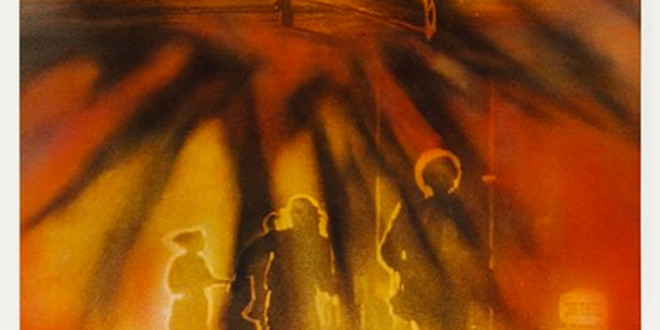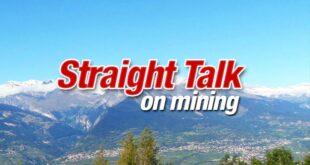You have to choose (as a voter) between trusting to the natural ability of gold and the natural stability and intelligence of the government. And with due respect to these gentlemen, I advise you, as long as the capitalist system lasts, to vote for gold.
George Bernard Shaw
You can take your pick of reasons to explain the current malaise in the gold share market. Among the culprits named have been: investors exiting all equity markets (not just gold), the annual “sell in May and go away”, tax deadline selling of shares with flow-through benefits, and the lack luster recent results of Newmont Gold – the list goes on. Take heart, we have seen such things many times before in this cycle and there’s no reason to turn Chicken Little over it…. I did a back issue search of the National Post newspaper for the period of 2001 through today and the gold bull was declared dead no less than six times !! (June 26, 2001; July 11, 2001; October 9, 2002; April 29, 2004; November 30, 2004 and April 18, 2005). Judging by the web traffic to Straight Talk and new sign-ups to the email alert list, the interest in matters golden is healthy and I suspect there are many people out there contemplating some spring “bottom fishing”.
Anyone remember that Donald Sutherland movie, Invasion of the Body Snatchers? Where at first everything looked right, but you had an ever more unsettling sense that things were wrong? It’s one of those devices of the horror genre we have come to expect when we walk into a movie house. One website described the movie thus: “The atmosphere of dread and paranoia grows increasingly intense as the complexity of the alien invasion is gradually revealed, until nobody can be trusted to be who they appear.” It’s all good fun.
Headlines like “GM and Ford bonds reduced to junk”, “Congressional budget office forecasts costs of Iraq war to top $80 billion in 2005”, and “UAL defaults on pension obligations”, are in fact real horror. Folks ought to be outraged. However, in this unfolding economic scenario, complacency is the order of the day. We are all inured against headlines.
But… little personal signs do indeed pop up regularly that all is not right with the real world and I sense a growing pervasive feeling of foreboding….in my case one of my latest was indeed a very little sign… by the cash register at my morning coffee and muffin shop, which apologized for the need to raise prices for the entire contents of the store, in order to ensure continuing quality. We adults all know that that’s code for “the store is feeling the squeeze” and so have passed higher costs on to the consumer.
In ancient Rome, religious officials foretold events by observing and interpreting signs and omens, often from nature. My favorite was the haruspex, who foretold the future through “reading” the entrails of various animals (some stock market analysts arguably use methods not much more technologically advanced to forecast the market). When the signs of trouble become more numerous and intrude on everyday life it is time to start paying attention.
My public transit fare has gone to $2.50 from $2.25. My morning paper is now 75¢ versus 25¢ last year. The cost to mail a local letter is up to 50 cents from 49. Every tiny mundane part of my existence is becoming more expensive. Individually, these are minor annoyances, but collectively they are starting to bite….not to mention the bigger ticket items like a tank of gasoline, my utilities bills, I could go on and on. Some clown came to my door last night with dire apocalyptic warnings that I would freeze this coming winter if I didn’t sign up to his company’s scheme and “lock in” the price I pay for natural gas. All these forces on the consumer I call the “little squeeze”.
The little squeeze is important to appreciate, because all those little squeezes compounded together are causing people to make lifestyle changes and cut out those little luxuries like a coffee and muffin each morning. Revenue from movies is down 6% over this time last year. Notwithstanding the Academy performance Paris Hilton no doubt put in (I have not see her film) attendance has fallen off the table. Such omens bode ill for elective spending and Christmas retail. The consumer cannot ride to the rescue unless it’s on a bicycle.
Everybody is in the squeeze. Manufacturers pay more money for power, fuel and raw materials. Already shaved to the bone, they can only absorb so much and need to pass those costs on to consumers who have to incrementally pay more for everything.
Gold Miners and The Squeeze
A look at recent headlines makes it clear that gold producers too are in the Squeeze – BIG TIME. Gold producers should be making boatloads of money and they’re not. How can this be so? Hasn’t the gold price risen from $US260 a few years ago to its present $US420 per ounce? Why yes. So we have an apparent paradox. The factors affecting the profitability of gold mining operations are not simply down to the price paid by the refiners for each ounce of gold delivered. Here’s why:
Local Currency Fluctuations
The gold price miners receive is dictated by the international market, and individual producers can’t tell the refineries they want more money for their product – they have no price control, so unlike my coffee and muffin shop, if their costs go up they have no way to pass expenses on to purchasers. Moreover, the international price is quoted in U.S. bucks, which is fine if you are a company with all your operations (and costs) in the U.S., however if your mines are in a country where the currency has been appreciating in U.S. dollars you face a double whammy. Gold may be going sideways or even down in terms of local currency while your costs are inching upwards. A mine is a fixed asset; you can’t cut your costs by setting up elsewhere cheaper, like the numerous call centers sprouting up in India, for instance.
If you look at the new crop of annual reports you’ll see most mining companies with operations in several countries will make reference to “sensitivity to local currency fluctuations”. This is an analysis of the impact of significant changes in currency exchange rates. For instance, say the rand appreciates against the dollar, then mining an ounce of gold in South Africa – in dollar terms – becomes more expensive and your profit shrinks. If the rand drops against the dollar, mining costs in dollar terms decline and your margins improve. This is always important to understand because the amount you will be paid by the refinery for your gold will be in US dollars. Currency fluctuations by themselves are not going to make a mine profitable or unprofitable, and there are other factors at play (see below), but it has been perhaps the single most important factor why gold miners have not been making big bucks.
Energy Costs
Mining operations are huge consumers of electricity and diesel fuel, as well as significant consumers of natural gas and propane. Everyone is acutely aware how energy costs have gone up over the last calendar year.
If you are mining underground, you probably have substantial costs to run the fans and blowers that ventilate the mine. You may be using refrigerated air to lower the temperature in the working stopes (especially in the South African deep mines). You will be using electricity to haul your ore and people up the shaft. You might have diesel scoop trams moving the ore and waste around underground, or you may have an electric car system. Your electric pumps work constantly to keep the workings from flooding. In the South African goldfields many of the underground workings are interconnected; meaning that if your neighbor goes bust and pulls his pumps you will probably have to increase your own pumping capacity to deal with the excess.
If you are mining by open pit, your haul trucks and shovels will be diesel or electric. It will be costing you more to strip waste in the pit as fuel costs go up. Most open pit mines like underground operations need to be pumped to keep them free of water.
Almost all the mill equipment is probably electric powered. We’re usually talking here about huge buildings stuffed full of crushers, agitators, thickeners, ball mills, conveyors, cyclones, screening plants and other vital equipment. If processing by heap leach, the ore needs to be crushed, and pads stacked with broken ore either by truck, conveyor, or combination of the two. Barrick Gold Corp. consumes between 1.3 and 1.5 billion kilowatts at their mines worldwide.
Rather than be at the mercy of high fuel costs, Placer Dome, Barrick and Newmont are all looking at becoming power producers themselves. Placer is considering a 125 Megawatt coal fired plant at Pueblo Viejo. Barrick is building a 115 Megawatt natural gas-fired plant at Goldstrike, Nevada. They also have fuel and propane hedge (ewww there’s that word again) programs. Newmont has “advanced plans” for a coal-fired power plant in Nevada and has invested in Canadian Oil Sands Trust as a hedge against rising fuel costs. We can debate the wisdom of gold miners entering the electricity generation business.
Commodity Costs and Availability of Materials
All the Senior Gold Companies discuss supply chain management and sourcing of materials in their recent literature. “Cost saving initiatives” often figure prominently. In a typical mining operation there will be considerable consumables, such as lubricants, reagents, lime, acid, grinding media, and…. rubber tires! Mining operations consume huge numbers of rubber tires because the wear and tear in the mine environment is considerable. The days of tapping rubber trees are mostly over; tires have long been made synthetically. Like anything petroleum-based they are becoming more expensive.
China’s modernization has been sucking up worldwide stocks of commodities like steel and metallurgical coal. On the minesite, every piece of equipment made from sheet steel, and every mine vehicle and piece of heavy equipment is becoming more expensive, due to higher purchasing costs of steel for fabrication. Structural steel and concrete figure prominently in all mine and mill construction, as well as tailings dams and impoundments. I have recently heard of situations where millsite construction went way over time and budget due to skyrocketing structural steel costs and simple unavailability. 2004 was a year of tight supplies and inventory. February 2004 prices were $432/tonne versus $740/tonne February 2005 for hot rolled steel plate.
Concrete has become more expensive because it is pricier to produce the aggregate and cement raw materials. The kilns that calcine the lime used in cement are often natural gas fired. US Concrete Inc. reported their first quarter 2005 average selling price was 12.7% higher than the same quarter last year.
I read a press release recently where a company had announced that it had secured a long term source of rubber tires for their mining equipment. Good for them! (It almost sounds like WWII rationing is back.)
Increasing Costs of Labor
Downsizing is never popular with workforces and as senior producers attempt to mothball or close marginal mines and retrench miners they run into conflict with labor groups made up of people who themselves are in the squeeze. Harmony Gold has already been affected by a strike in late March, and Gold Fields narrowly averted one.
Declining Grades
In the face of shrinking margins Bobby Godsell of AngloGold-Ashanti has scheduled the company for aggressive liposuction. I am not singling him out, but his company has admitted to falling grade profiles. Many of the world’s gold mines and districts are simply getting old and tired. A mine is a wasting asset that gets depleted over time. You can do as much cost-cutting as you care to do, but there is only a finite amount of gold in any mine.
For the period 1997-2002 there was little exploration expenditure by the gold industry, especially by junior companies, because venture capital was siphoned away by the dotcom boom. The seedbed for new projects that is usually provided by juniors simply was not there, and so the industry is now playing catch-up, with worldwide gold production levels still forecasted to fall. In addition, the M&A flurry we saw worldwide extended into the gold mining sector and some companies have been justly accused of robbing their orebodies to temporarily get their production profiles up. High grading an orebody may look great on paper to investment bankers but it can lead to premature death of the mine. There are a number of new mining projects in the pipeline, but we haven’t seen many open in the last two years.
The Bottom Line
As production costs increase without a concomitant increase in the price of the metal, marginal gold reserves become uneconomic. If the situation becomes serious enough it can make a gold mine an unpaying proposition. To persist in mining would be to throw money down a hole….literally. As costs begin to take hold they can push ore out of the “reserve” category back in the “resource” category, necessitating companies revise their reserves downward. As one of my old professors used to say, “if it can’t be mined at profit, it’s not ore”.
The bottom line is that the gold price needs to move higher to give miners a decent return on investment. Nobody ever downsizes their way to success. Eventually, mine closures would force the supply of new gold downwards and drive up the bullion price, but that’s not the route the industry wants to go. Senior executives of mining companies need to focus not on cost-cutting, closing down unprofitable mines, and building power plants, but on marketing their product, maybe withholding gold from the market, getting the World Gold Council to grow a spine, and perhaps uniting with other producers in a cartel – if that’s what it takes. One thing that immediately comes to mind is to loose the pit bulls on every politician who talks about selling IMF gold. The public relations departments should be hammering away relentlessly at these guys. This is becoming a high stakes game of Survivor: Outwit, Outplay, Outlast – and we may see mergers and acquisitions of distressed companies before long.
Blue Skies for Miners, Storm Clouds for Everyone Else
What I’ve laid out above sounds pretty bleak, but I think that there are macroeconomic factors that are just about to rescue the miners and propel gold prices forwards. Just in the last few days we have seen evidence that foreign governments are beginning to jettison dollar-denominated debt from their currency reserves. Back in February a shudder went through financial markets when South Korea merely mooted the idea of scaling back their US dollar investments and diversifying their foreign reserves. They quickly backtracked if you remember. The big shocker in the last few days is release of data showing that purchases of Treasuries by China have skidded to a halt.
http://www.ustreas.gov/tic/mfh.txt
A precipitous drop in the value of the US dollar will cause trouble for miners if gold fails to rise in other currencies, but this drop may be so deep and profound to start a panic that will force other countries to massage their own currencies downward. According to the German Federal Statistics Office, March unemployment was a whopping 12.5% of the workforce. A huge spike in the Euro against the dollar will only make this problem worse as it would choke off the flow of European exports to the US.
The US is virtually powerless to stop the bleed of investment cash elsewhere. Hikes in domestic interest rates to protect the dollar would tank the economy. There has been much table thumping by the US about the value of the Yuan, but China has so far not been compliant and revalued its currency upwards. Bush is still agitating for this to happen but the Chinese certainly are not going to voluntarily shoot themselves in the foot and make their own exports less saleable. Bush has decided to turn this into a domestic issue and has taken the predictable course of introducing protectionism. States like North Carolina stand to lose 10,000 to 20,000 more textile industry jobs this year says the Charlotte Observer, and so May 18th’s announcement of new import quotas on Chinesemade apparel raises no eyebrows. It remains to be seen if this is just the start of a whole slew of new tariffs and trade barriers designed to halt the flood of cheap goods from China.
So where is all this cash that would otherwise be in Treasuries going to go? If you want to clear out of the dollar and storm-proof your holdings the best choice is to increase your bullion reserves.
The haruspex has his hands full these days. No amount of chicken gizzard reading or crystal ball gazing is going to accurately call this one, but it’s clearly time to start paying attention to the signs.
Geology 101
You may have seen an annotation in tables of released assay results of “assays cut to 20 g/t Au” or something like that. What does it mean?
The distribution of gold in a mineralized body, especially in veins is often not uniform. The gold can occur in fractures, seams, masses, or small globs. It can also be partially or fully encapsulated in other minerals like pyrite. Sometimes gold can be in particles or nuggets that are big enough to be seen with the naked eye. I’ve taken a photo of a piece of high grade I found as a student on a field trip underground at the Dome Mine in the early 1980’s. The white material is quartz and the black is the wall rock from the edge of the vein. You can see some yellow gold in the quartz at the top of the picture.
The non-uniform distribution of gold you see is called the Nugget Effect. Large grains or nuggets may contribute much of the contained metal in a vein. A Problem arises when you want to properly extrapolate the gold contained in a small sample volume, say a drill core, to a much larger volume in a resource calculation. A second problem comes from the sample itself and reproducibility of the result. You could reassay the sample in my hand here and get results that differ by perhaps 200%, depending on whether or not a coarse gold particle ended up in the assay crucible. To get around this second problem, explorationists will often ask the laboratory to provide a “metallic screen analysis”. Because gold is malleable and soft it tends to get pounded into little pancakes or smeared out in the crushing and milling equipment labs use. When the material is then sieved and the finer fraction sent to the assay furnace the gold particles could stay on the screen and be left out. In a metallic screen analysis the coarse gold is segregated from the fines and assayed separately. What you get are two assay results: one for the coarse fraction and one for the fine. This will give you a much better idea of what’s going on and how to further consider the results. The assay lab I use has a great downloadable summary of coarse gold problems.
http://www.alschemex.com/downloads/newsletters/course%20gold%20problems.pdf
When it comes to reporting the results in a press release, say in a drill intersection, promoters are often loathe to take out or minimize high assays. High assays after all attract market interest. Often high assay spikes will be due to the erratic gold distribution in a vein system. That’s just the way nature does these things. However, the high assay may not be representative of the vein that is being sampled. In many scenarios it is desirable to use a “cutting factor” or “top cut” to reduce individual high assays before any grade averaging is performed. At the start of an exploration program, or when doing regional work it is inappropriate to cut the assays because not enough is known about the gold distribution. However, if working in the vicinity of a mine or in an established camp, there may be an arbitrary cutting factor based on a traditional value used for the type of deposit in the area. In a new area, when 1000’s of samples have been taken and a data base of values has been compiled a cutting factor can be determined from statistical calculations. It’s important to use a cutting factor if your mineralization is prone to assay spikes from high grade so that you conservatively estimate how much gold you have in the ground; otherwise, production decisions can be made on orebodies that do not contain enough gold to be profitable. When an orebody is in production, the cut-off grades will be fine tuned and adjusted to reconcile with the gold being recovered in the mill.
Prior to mining of the HGZ zone at the Goldcorp Red Lake Mine, over 85% of the drill intercepts displayed visible gold. The historical cutting factor for the mine was used on initial reserve models, but later when reconciled against production figures was found to be underestimating the contained gold. The cutting factor had to be revised upwards not once but twice! Refinement of the cutting factor resulted in the ore reserve grade increasing 20% from year-end 2000 (Sept 12, 2001 news release).
—–
I’ve been doing some research on some OTC:BB junior exploration companies lately and found many disquieting things. I wouldn’t want to condemn everyone on the bulletin board, but I do find it a bit like the old Wild West, with lots of factual inaccuracies, many outrageous statements, and what appears to be a sad lack of market vigilance by regulators. The offenders tend to be companies with their sole listing on OTC:BB, not cross-listed juniors.
The annual spring gold show in New York is just about upon us, and last year I entered the main conference hall on one of the days to find brochures placed on the rows of many chairs advertising an OTC:BB company which claimed to be exploring for diamonds in eastern Canada. I want to stress that this company was not registered at the conference, did not have a booth, and had placed literature in the hall in strict violation of the conference rules. The brochure was astounding. There were photos of mining machinery working in open pit mines (the company did not in fact own a mine) and there was a beautiful scenic shot from Jasper National Park in Alberta (which is in WESTERN Canada). No captions to these photos, which led me to wonder what they were doing there. Also no mention in the brochure of officers or directors of the company, nor a corporate address – just the ticker symbol. The worst offence was a shot on the front page of a handful of Herkimer Diamonds.
Herkimer “diamonds” are in fact ultra-pure doubly terminated quartz crystals which are found in dolomite rock in upstate New York. They look like facetted gems. When they were first discovered back around the time of the American Revolution there was actually a plan to use them to fund the Continental Congress. Wishful thinking. The crystals are NOT real diamonds and have value only to collectors. I’ve been to the Herkimer quarries a couple of times and here’s one from my collection. If you want something fun to do with the kids this summer I highly suggest you make a visit if you are in the area. But bring safety glasses and don’t use claw hammers from home to break up rock – they are too soft and the steel will splinter! I’ve got a link to the Herkimer quarry below.
http://www.herkimerdiamond.com/hdmstart.htm
Now, the exploration company never made any claims that these were diamonds, nor that they came from their property; but gosh, what the heck were they doing in a brochure in the first place??! Do yourself a favor and do some investigation. A simple look at the SEC filings of many OTC:BB companies will enlighten you. If they were in the food services business last month and now in the gold exploration business, with the same officers, directors, and principals, I’d steer clear.
 Straight Talk On Mining Insights on mining from economic geologist Dr. Keith Barron.
Straight Talk On Mining Insights on mining from economic geologist Dr. Keith Barron.




